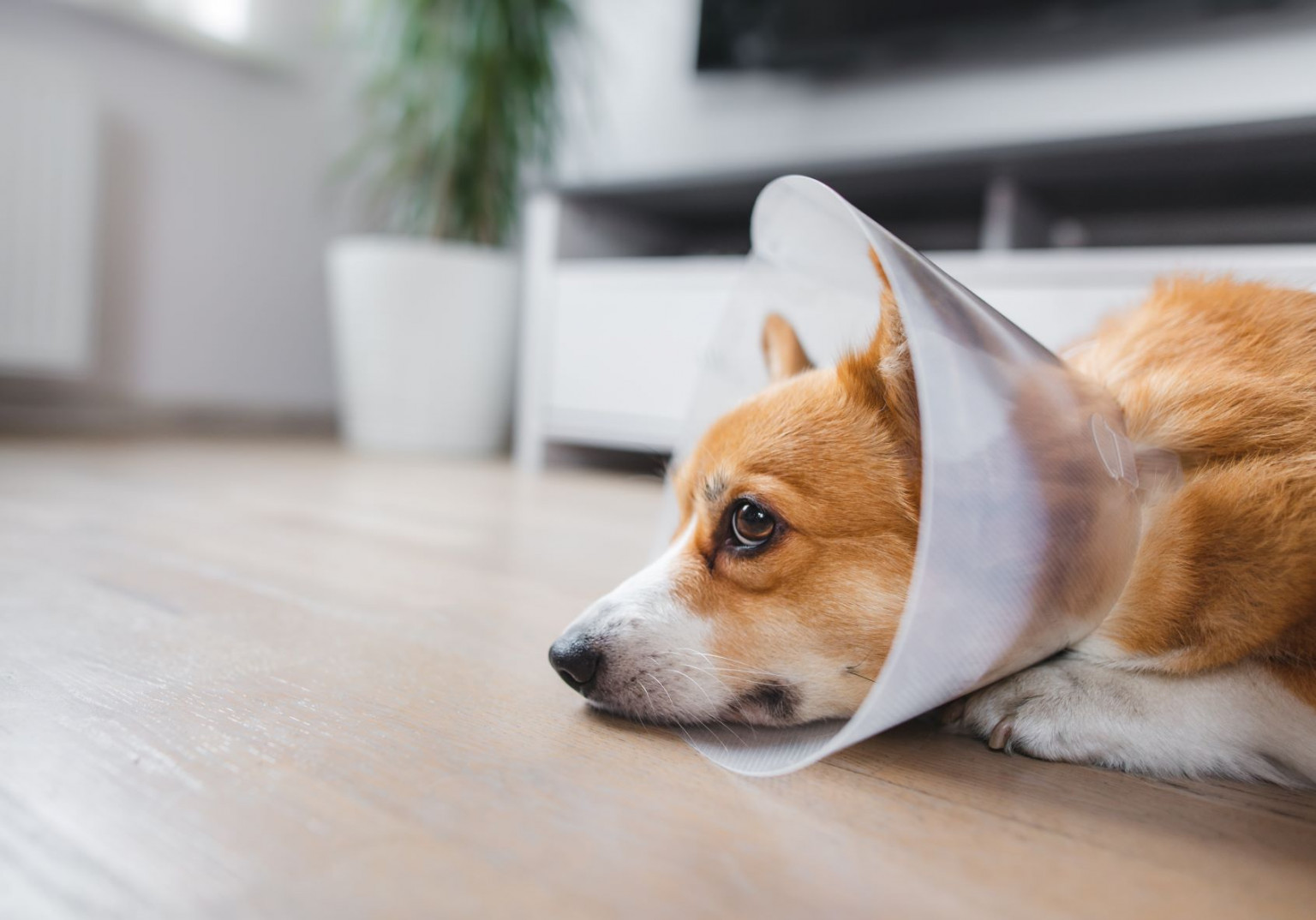Do you need help?

My dog seems sleepy after spaying - is this normal?
Your pet will have received one or more different types of painkillers and potentially other medications such as antibiotics, and anti-nausea drugs at the time of the surgery. These drugs, given by injection, will not have a prolonged effect and you may have been provided with medication to provide your pet when they get home. These drugs can make your dog a bit sleepier and more subdued than usual.
Make sure that you read any prescription labels carefully regarding the dose, when to start, dosing frequency, and any special instructions such as ‘Give with food’.
Your dog may remain groggy for up to 24 hours after surgery from the effects of the general anaesthesia.
Can dogs eat right after spaying?
Your pet may feel groggy or nauseous after anaesthesia, so it’s important to start with a gradual reintroduction of food.
If your pet is refusing to eat or shows signs of discomfort, nausea, or vomiting when they eat then contact your veterinary surgeon for advice.
Begin feeding your pet a small meal (1/4 of their normal food quantity) of a bland diet (e.g. boiled chicken and rice, or a prescription diet provided by your veterinary surgeon) approximately 2 to 4 hours after discharge.
If your pet tolerates a small meal well without vomiting or showing any signs of discomfort, you may repeat several small meals. Aim to give 75 – 100% of the total daily requirement divided into around 4 – 6 small meals over the first 24 hours.
You can resume feeding normal quantities the following day but slowly return to their normal diet by mixing it in with the light diet for at least 4-6 meals gradually increasing the proportion of normal food each time.
How should I take care of my dog's surgical incision?
Monitor the incision site for any signs of redness, swelling, discharge, or opening of the wound.
If a dressing has been applied do not remove it unless your veterinary surgeon has advised you to do so. Monitor dressings for staining, wetness, or signs of discharge or bleeding. If a dressing becomes wet or slips then it may need replacement – contact your veterinary surgeon for advice.
Do not allow your pet to lick or chew the incision area. If you have been provided with an Elizabethan collar (cone) you must use it to prevent this behaviour.
Keep the incision site clean and dry. Avoid bathing your pet for at least ten days after surgery or as recommended by your veterinary surgeon.
If there is any discharge or swelling of the wound, contact your veterinary surgeon immediately.
If external sutures are visible they will usually require removal 10 – 14 days post-surgery.
Is my dog's spay wound infected?
All surgeries and anaesthetic procedures carry a risk of complications. The most common issues are pain, haemorrhage, inflammation, infection, and surgical failure requiring remedial procedures. Every care has been taken to minimise the risks to your pet, but it is impossible to eliminate all potential complications.
If you notice any of the following concerns, contact your veterinary surgeon immediately:
- Excessive pain or discomfort
- Persistent or worsening swelling of the incision site (some swelling post-operatively is normal but it should start to go down within 24 hours)
- Discharge from the incision site, particularly if it is thick, pus-like, or foul-smelling
- Loss of appetite or a significant decrease in thirst
- Signs of infection, such as redness, warmth, or spreading red streaks around the incision
- Any other concerns you may have regarding your pet’s recovery
Remember, each pet’s recovery may vary, so it’s essential to monitor your pet closely during the post-operative period.
If you have any concerns, find your nearest Vets Now clinic or arrange a video consultation with PawSquad.

